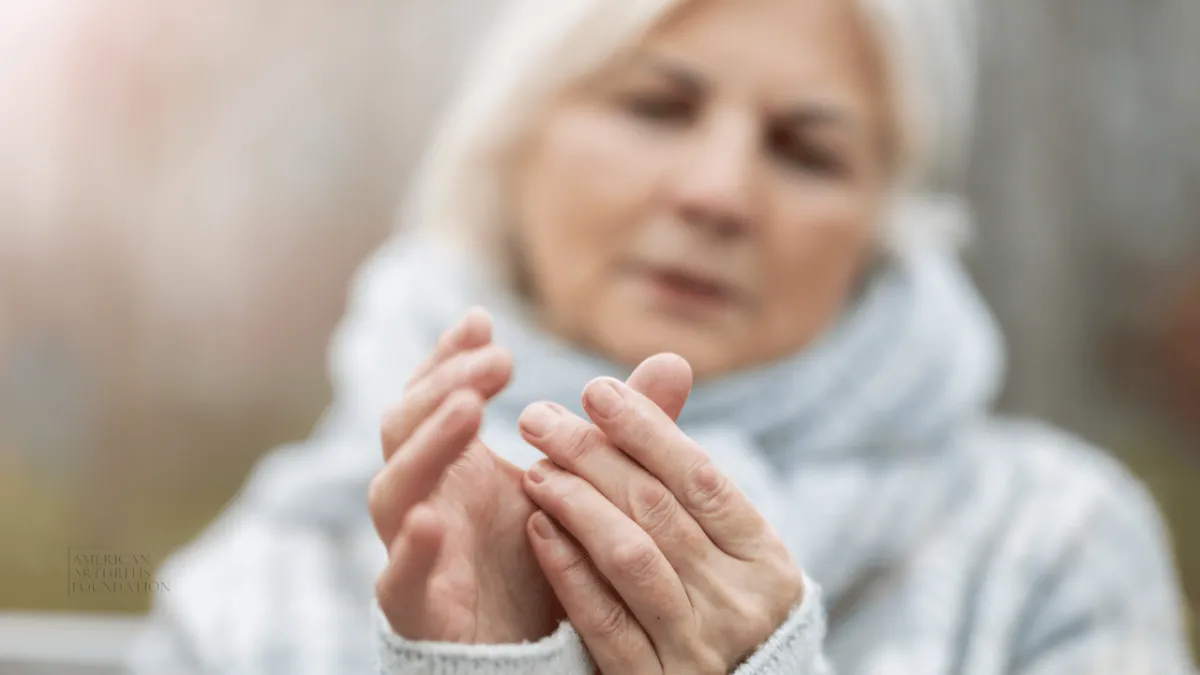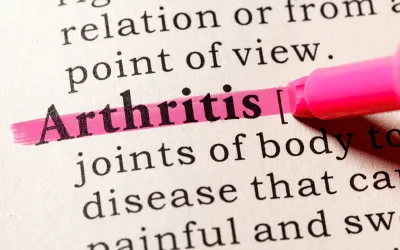About Arthritis
As the nation’s #1 cause of disability, arthritis affects nearly 60 million adults and 300,000 children. Over 100 types of arthritis and related conditions damage the joints and often other organs.
How can we assist you?
Helpful Tools for You

Living Well with Psoriatic Arthritis: Your Roadmap to Better Days
Psoriatic arthritis (PsA) is the arthritis that likes to hide in plain sight. Affecting up to 30% of people with psoriasis, this condition often flies under the radar for years—dismissed as "just back pain" or "normal joint aches." But PsA is far from normal. It's an autoimmune condition that attacks both your skin and joints, causing everything from swollen fingers that look like sausages to spine stiffness that makes getting out of bed feel impossible.
Here's what makes PsA particularly challenging: it doesn't follow rules. Unlike other types of arthritis that typically affect matching joints on both sides of your body, PsA can strike anywhere—your pinky toe, your lower back, or just your left knee. One day you might have a psoriasis flare, the next your joints are screaming.
The good news? Research shows that simple, affordable lifestyle strategies can significantly improve both your skin and joint symptoms. These aren't band-aid solutions—they're science-backed approaches that address the root inflammation driving your condition.
1. Fuel Your Body with Anti-Inflammatory Foods
Why it works
A 2023 study found that people with PsA who followed a Mediterranean-style diet for 12 weeks experienced a 40% reduction in disease activity scores and significantly improved skin lesions. The diet's omega-3 fatty acids and antioxidants help cool down the inflammatory fires that fuel both joint pain and skin flares.
Action steps • Replace red meat with fatty fish (salmon, sardines, mackerel) twice weekly—canned versions work just fine • Drizzle extra-virgin olive oil on salads and use it for cooking instead of butter or vegetable oil • Load half your plate with colorful vegetables at each meal—frozen varieties are budget-friendly and just as nutritious • Swap refined grains for whole versions: brown rice, quinoa, whole-wheat bread, and oats
Caso F. Mediterranean Diet and Psoriatic Arthritis Activity: A Multicenter Cross-Sectional Study. Rheumatology International. 2023.
2. Move Your Body (Yes, Even When Everything Hurts)
Why it works
Exercise might seem counterintuitive when your joints are angry, but research consistently shows it's one of the most powerful tools for PsA management. A 2022 systematic review found that regular physical activity reduced joint pain by 35% and improved physical function while also decreasing psoriasis severity.
Action steps • Start with water-based activities if land exercise feels too harsh—even walking in a pool counts • Try chair exercises during TV time: seated marching, arm circles, and gentle spinal twists • Add resistance training with household items: soup cans for weights, stairs for step-ups • Aim for 150 minutes weekly, but start with just 10 minutes daily and build gradually
Perrotta FM. Physical Activity in Psoriatic Arthritis: A Systematic Review. Clinical and Experimental Rheumatology. 2022.
3. Prioritize Stress Management (Your Skin and Joints Are Connected)
Why it works
Stress doesn't just feel bad—it literally makes PsA worse by triggering inflammatory pathways. A 2023 clinical trial showed that mindfulness-based stress reduction led to significant improvements in both joint symptoms and psoriasis patches after just eight weeks of practice.
Action steps • Practice the "4-7-8" breathing technique: inhale for 4 counts, hold for 7, exhale for 8—repeat 4 times when stressed • Download a free meditation app (Insight Timer, Calm) and start with 5-minute guided sessions • Try progressive muscle relaxation before bed: tense each muscle group for 5 seconds, then release • Schedule one stress-free activity weekly that brings you joy—reading, gardening, or calling a friend
Haupt M. Mindfulness-Based Interventions for Psoriatic Arthritis: A Randomized Controlled Trial. Journal of Rheumatology. 2023.
4. Optimize Your Sleep Environment
Why it works
Poor sleep creates a vicious cycle with PsA—pain disrupts sleep, and sleep deprivation increases inflammation and pain sensitivity. Research shows that improving sleep quality can reduce disease activity markers by up to 25% within six weeks.
Action steps • Keep your bedroom cool (65-68°F) and invest in blackout curtains or an eye mask • Create a wind-down routine: dim lights and avoid screens 30 minutes before bed • If joint pain disrupts sleep, try supportive pillows between your knees or under painful joints • Establish consistent sleep and wake times, even on weekends—your body craves routine
Luyster FS. Sleep Quality and Functional Disability in Patients with Rheumatoid Arthritis. Journal of Clinical Sleep Medicine. 2022.
5. Harness the Healing Power of Gentle Heat and Cold
Why it works
Temperature therapy is one of the oldest pain management tools, and modern research validates its effectiveness. Studies show that alternating heat and cold applications can reduce joint stiffness by 30% and provide several hours of pain relief in PsA patients.
Action steps • Apply moist heat (warm shower, heating pad) for 15-20 minutes before activity to loosen stiff joints • Use cold packs wrapped in thin towels for 10-15 minutes after activity to reduce swelling • Try contrast showers: alternate between warm and cool water for 30 seconds each, repeat 3 times • Invest in reusable gel packs (about $15) that work for both heating and cooling
Singh JA. Temperature Therapy for Psoriatic Arthritis: A Systematic Review. Arthritis Care & Research. 2022.
6. Consider Targeted Supplements (But Choose Wisely)
Why it works
While supplements aren't magic bullets, specific nutrients show promise for PsA. A 2023 meta-analysis found that omega-3 fatty acids (2-3 grams daily) and vitamin D supplementation significantly reduced joint pain and improved skin symptoms over 12 weeks.
Action steps • Take 2-3 grams of combined EPA/DHA omega-3 supplements daily with meals • Ask your doctor to check your vitamin D level—many PsA patients are deficient • Consider curcumin with piperine (500mg twice daily) for its anti-inflammatory properties • Store supplements properly and take with food to improve absorption and reduce stomach upset
Rodriguez-Carrio J. Nutritional Supplements in Psoriatic Arthritis: A Systematic Review and Meta-Analysis. Nutrients. 2023.
Your Quick-Start Action Plan
Week 1: • Add one serving of fatty fish to your diet • Try 10 minutes of gentle movement daily • Download a meditation app
Week 2: • Establish a consistent sleep schedule • Experiment with heat/cold therapy during flare-ups • Start tracking symptoms and triggers in a simple journal
Month 1: • Consider omega-3 supplements after consulting your doctor • Build stress management into your daily routine • Gradually increase physical activity
You're Stronger Than Your Condition
Living with psoriatic arthritis can feel like you're fighting a battle on two fronts—skin and joints. But remember, small consistent actions create big changes over time. These evidence-based strategies work best when you choose one or two to focus on initially, then gradually expand your toolkit.
Most importantly, these lifestyle approaches enhance—never replace—your medical treatment. Work closely with your rheumatologist and dermatologist to create a comprehensive plan that addresses both aspects of your condition.
Your journey with PsA is unique, but you don't have to walk it alone. Every small step toward better health is a victory worth celebrating.

Effects of Arthritis

Cause of Disability
In the United States, 23% of all adults, or more than 54 million people, have arthritis. It is a leading cause of work disability, with annual costs for medical care and lost earnings of $303.5 billion.

Workforce Effects
Sixty percent of US adults with arthritis are of working age (18 to 64 years). Arthritis can limit the type of work they are able to do or keep them from working at all.

Global Impact
In fact, 8 million working-age adults report that their ability to work is limited because of their arthritis. For example, they may have a hard time climbing stairs or walking from a parking deck to their workplace.
Promoting Interventions That Reduce Arthritis Pain
American Arthritis Foundation recognizes several proven approaches to reduce arthritis symptoms:
Be active. Physical activity—such as walking, bicycling, and swimming—decreases arthritis pain and improves function, mood, and quality of life. Adults with arthritis should move more and sit less throughout the day. Getting at least 150 minutes of moderate-intensity physical activity each week is recommended.
Protect your joints. People can help prevent osteoarthritis by avoiding activities that are more likely to cause joint injuries.
Talk with a doctor. Recommendations from health care providers can motivate people to be physically active and join a self-management education program. Should your arthritis be interfering with your activities of daily living you may be a candidate to receive many new treatments, and learn how to reverse the arthritis condition.
Have a question?
We're Here to Help
By providing my phone number, I agree to receive text messages from the business.


